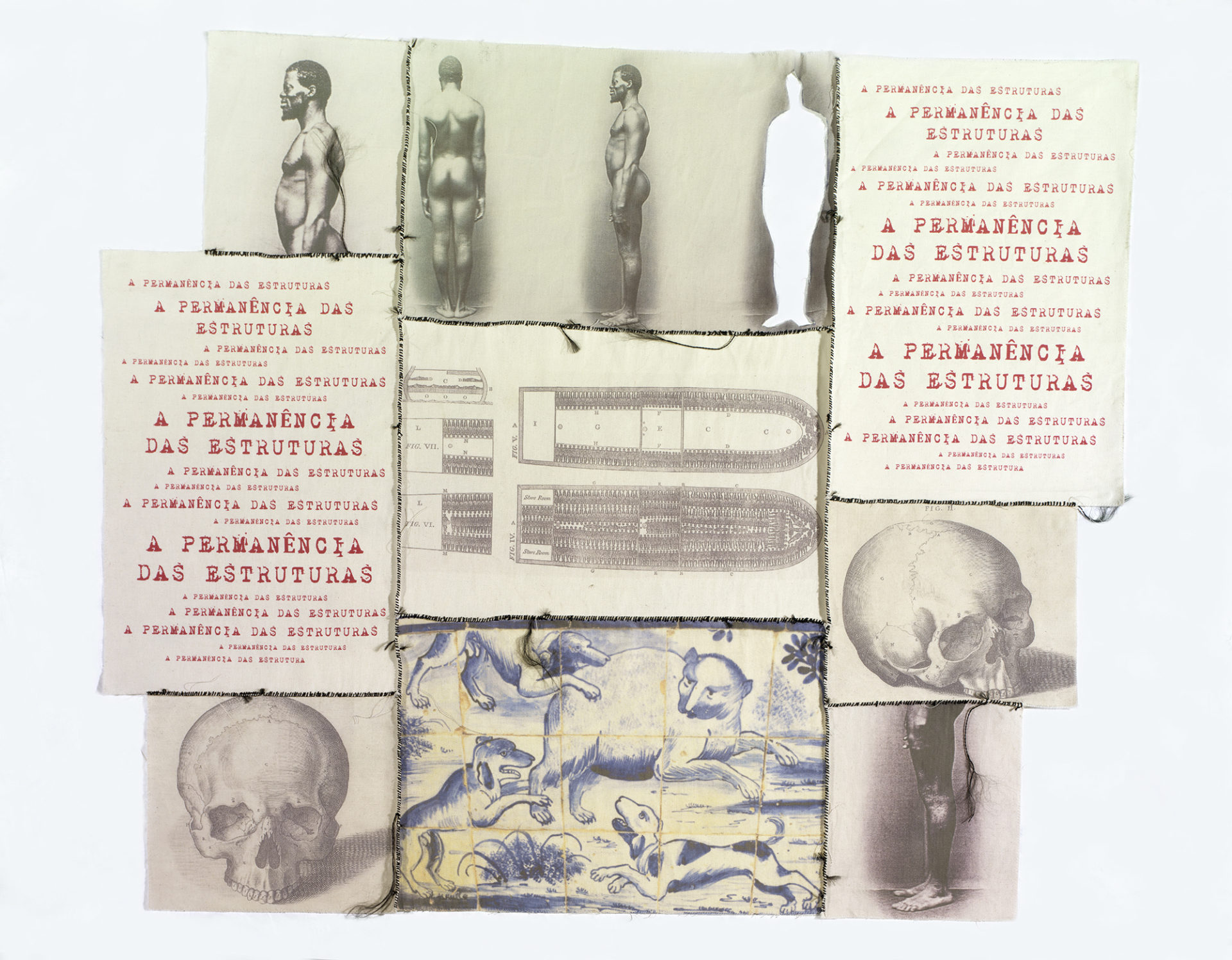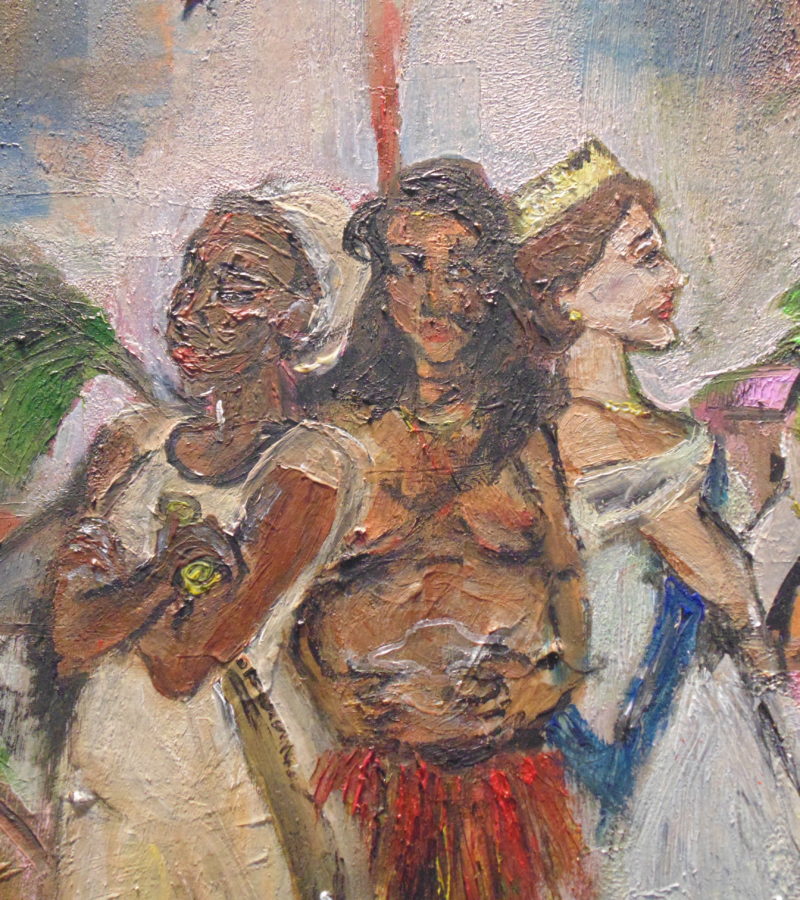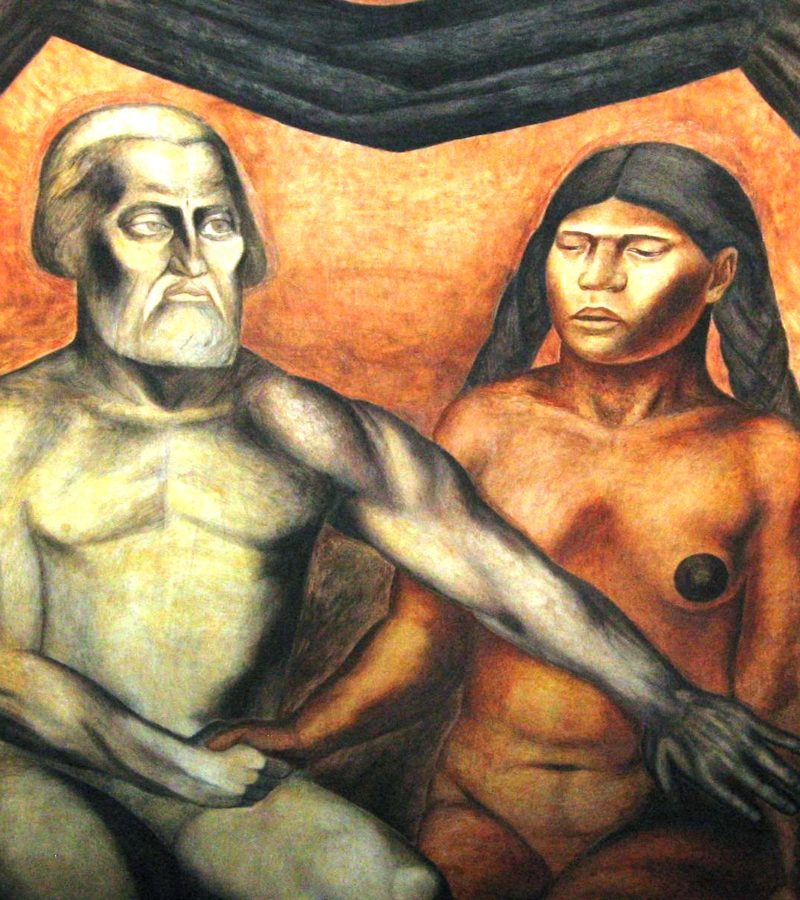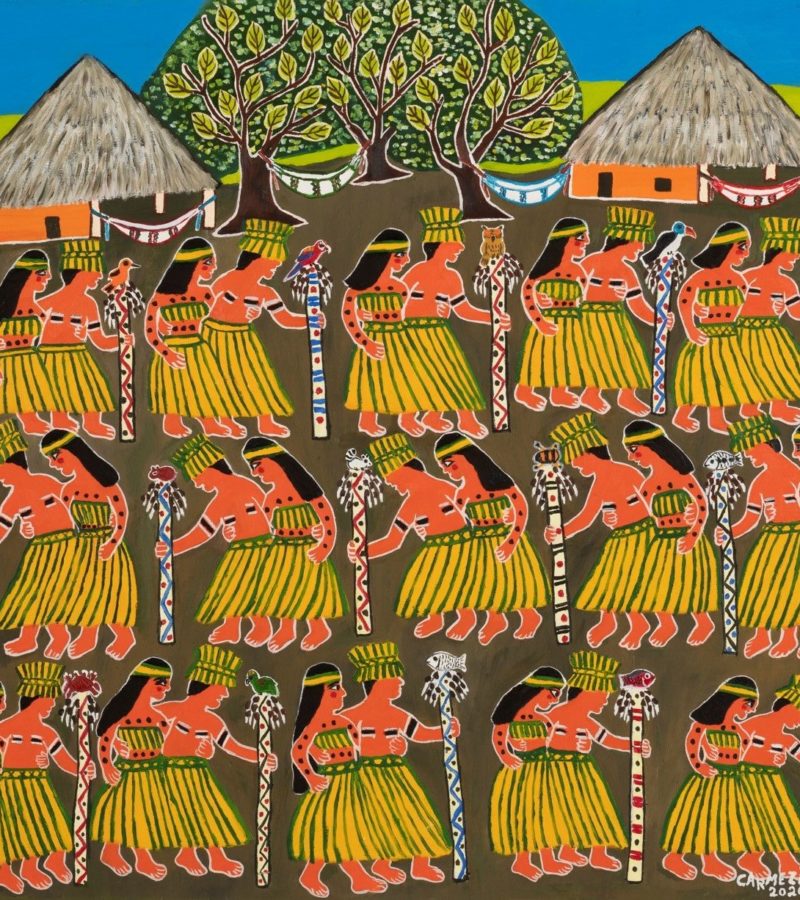The following notes bear some questions regarding the production of contemporary Black/African-Brazilian art, along with some thoughts on the challenges that the entry of such previously marginalised creators onto the Brazilian artistic scene have brought, in relation both to critical readings and to the difficulties among those distant from Black peoples’ realities in comprehending, discussing, theorising and disseminating their works.1
Such concerns are raised by the fact that non-comprehension of these creations’ specificities can easily lead them to a condition of ‘ghetto art’, in the sense they are only allowed to enter into dialogue with practitioners and connoisseurs of a very specific type. I believe this is a mistake, since these artworks advance discussion around views of Brazil that have not been available in hegemonic spaces of contemporary art production. To study and understand some of the specific aspects of these artworks (those, for instance, made by Indigenous peoples) contributes, through the friction between different forms of knowledge, to the possibility of thinking about the nation in a deeper and more plural way.

Often, when reading statements by Black artists, we notice that their works deal with issues around healing, affection, praising or questioning cultural models or beauty standards, and notions of the world that were once considered universal but which, in reality, subjugated elements of one culture at the expense of others. Among these ‘others’ are native cultures or cultures of African descent that have been rendered inferior to European-based cultures. The discussion of these issues in the sphere of visual production often takes place through the use of the materials chosen by the artists to make their work. Not infrequently, these materials already have a strong visual and symbolic content at their core, and there is a reason for them to be part of the work. When entering the universe of contemporary art, how does the reading of these objects and materials used by Black artists happen? In my view, in order to be more successful in this, a serious examination of these works needs to consider their materiality, as well as their content.
An example of this can be observed in the work of the artist Ayrson Heráclito, since his practice has a strong connection with Candomblé. Heráclito declared in an interview with Hans Ulrich Obrist, that, for him, ‘Candomblé in Bahia and in Brazil is not only a religious experience, but rather a broad cultural experience, one that brings philosophical, scientific and aesthetic understanding to the world.’2 In some of his creations, the artist adopts food as raw material for exploring the genesis of the country. Beef jerky, palm oil and other culinary products are re-signified in order to reflect upon Brazil’s history and the erasure of Black peoples as holders and creators of knowledge. Lack of knowledge concerning the importance of food in the Black/African-Brazilian and Northeastern cultural traditions can lead to very superficial readings of the artwork. Crediting only, for example, the artist’s religiosity for his modus operandi, ignoring that this kind of production holds an extremely sophisticated cosmology that crosses elements of European art with Brazilian culture is, in effect, quite reductive. To learn information and its meaning in ways that broadens understanding of artworks by artists of African descent is, at the same time, to understand the history of this nation and to accept the culture of the various agents who built this society. The recognition of such specificities is linked to the reception of artefacts that, on the one hand, are in dialogue with the West (Heráclito cites European movements and artists who influenced his work) and, on the other hand, draw upon – and value equally – the knowledge of the Black/African-Brazilian matrix.
If artists like Heráclito work within a universe that has already been well documented – that of producers who are in some way linked to cultures developed in religious spaces of African origin, others bring knowledge from their own regional and familiar universes, from their lives in the outskirts of big cities, etc. Some of these issues have rarely been addressed in contemporary art. Upholding the existence of these universes, and their ways of producing and discussing art, is critical to a thorough understanding of the country’s cultural environment.
Curatorship, art criticism, cultural journalism and other areas of knowledge that deal with Brazilian visual production must, therefore, pay attention to the fact that themes within a Black/African-Brazilian repertoire, and their ‘alternative’ approaches, are not to be exoticised, and to the fact that ways of looking at life, and of operating, that come from different knowledge matrices, are the reality of a good part of the Brazilian population. In this sense, it seems necessary to me to update ways of reading works of art by Black artists. This challenge implies the creation of new analytical mechanisms, or perhaps the accumulation of different methodologies that allow us to think of broader ways of analysing artistic productions, embracing the multiple meanings emanating from materials, the social contexts, and the different cultures from which artists come. New ways of looking also imply the recognition of epistemologies that involve different ways of seeing and organising the world.
I would like to share a story that illustrates my point – an episode I remember that happened with a student of mine while we were working on a project. When the student was presenting her research to the group that would be making a collective exhibition, another artist questioned, ironically, if ‘all that’ she was proposing would fit into a work of art. I think that the failure here was not in the project the young woman proposed, but rather in the reductionist view of that other artist – a university professor – who had as the starting point of his criticism a totally Europeanised vision of art, ignoring the ancestral knowledges incorporated in the proposal. In response, I pointed out to the student that we come from a culture in which a stone can easily represent a world. An Orisha’s Otá is a ‘stone’ that, when carefully immersed in water or other fluids, often represents, in its particular aesthetic, the forces of creation and the ‘Axé’ of that deity. How does one dispense with the visual and symbolic richness of such an image? How can you strip off the visual knowledge and codes learned since childhood to adapt to an exclusive view of artistic production that ignores other codes through which to read the world?
The critic, not considering that different forms of knowledge are possible, and not comprehending that art can express itself through codes that the critic ignores or refuses to accept is a way of perpetuating the idea that art is only what he and his group consider as such. This reveals his lack of acknowledgement of the multiple intrinsic mechanisms in the production of works of art that emerge from non-European contexts. Art critic and curator Fabiana Lopes, in a text included in the catalogue of the show Territórios: artistas afrodescendentes no acervo da Pinacoteca [Territories: Artists of African Descent in the Collection of the Pinacoteca], guides our attention through a system of ‘interpretation keys’ that she adopts:
The second key I consider important in order to understand the silencing usually linked to Black/African-Brazilian art production is the comprehension that western thought, when considered as an indisputable reference, sometimes invalidates and sometimes attributes new meanings to traditions and epistemologies that coexist with it. By doing so, it displaces these knowledge systems to a marginal position within its own narrative construction.3
It is, therefore, urgent that curatorship, art criticism and other ways of reading Brazilian visual art come out of the box they have been put in, in order to assert that Black/African-Brazilian art is part of, rather than separate phenomenon from, what constitutes Brazil itself, and should thus be part of a multiplicity of shows, rather than being limited to thematic exhibitions. The words expressed by Black/African-Brazilian artists evoke materials, rituals, philosophies and broad, diverse and plural forms, which have a lot to contribute to the artistic production of a multifaceted country like Brazil. These artists are, in different ways, updating the making of art and the thought around it, suggesting possibilities for reflecting on and challenging our society.
The eye must see and learn new ways of thinking. Artist Paulo Nazareth, writing about the artist Sônia Gomes, gives us a hint:
… the eye goes to college, gets a master’s degree and a PhD in europe, but the eye learns nothing because to this day it still lives in the 18th century colony … the eye does not yet know that europe is no longer the world’s cultural center … the eye thinks itself as the elite and remains colonized…4
So, whoever has eyes to see, let them see.
- 1. I would like to thank MASP, represented by Amanda Carneiro, and Afterall for the invitation to this conversation.
- 2. Hans Ulrich Obrist, Entrevistas Brasilieras Vol.2, Rio de Janeiro: Editora Cobogó, 2020.
- 3. Fabiana Lopes, Território Silenciado, Território Minado: contranarrativas na produção de artistas afro-brasileiros contemporâneos, São Paulo: Pinacoteca do Estado, 2016.
- Paulo Nazareth, ‘As mãos negras contra o olho que não eh gente’, Panfleto publicado no livro Sonia Gomes, Rio de Janeiro: Editora Cobogó, 2017.

![[Description: Black and white photograph of people looking out of a window]](https://www.afterallartschool.org/wp-content/uploads/2021/03/Thomaz-Farkas_Rahul-Rao-800x900.jpg)
![[Description: Valeska Soares, Duplaface (Branco de titânio), 2017. Oil and cutout on existing oil portrait, 71 x 56cm. Courtesy MASP]](https://www.afterallartschool.org/wp-content/uploads/2021/03/Osmundo_Valeska-Soares-800x900.jpg)


